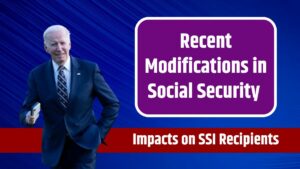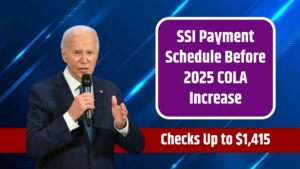November is approaching, and for about seven million Supplemental Security Income (SSI) recipients, it brings an extra payment from the Social Security Administration (SSA). This additional check isn’t a special bonus but rather a result of how the 2024 calendar aligns with the SSA’s payment schedule.
Payment Timing
SSI payments are typically issued on the first day of each month. However, if the first falls on a weekend or a holiday, the payment is made on the last business day of the previous month. This rule can result in recipients receiving two payments in one month and no payments in another.
In August 2024, for instance, SSI beneficiaries received both their August and September checks because September 1 fell on a Sunday. The same will happen in November, when recipients get their usual payment and an early payment for December, as December 1 also lands on a Sunday this year. Although this might seem like a windfall, it doesn’t increase the total annual benefit; it just shifts when payments are received.
Future
Looking ahead to 2025, irregular payment schedules will continue to impact SSI distributions. The first days of January, February, and March all fall on weekends or holidays, meaning those payments will be moved up to the last business day of the previous month. The January check will arrive on December 31, 2024, the February payment on January 31, and the March payment on February 28.
Consequently, there will be no SSI payment in March 2025. Starting in April, the normal schedule resumes with payments arriving on the first day of each month without further interruptions.
Regular Beneficiaries
For individuals receiving standard Social Security benefits, these calendar quirks won’t cause any changes in payment timing. Regular Social Security payments will continue to be distributed on the usual dates in November and December.
However, Social Security beneficiaries can expect an adjustment in their monthly payments due to the 2024 Cost-of-Living Adjustment (COLA). This annual increase is meant to offset inflation and is based on the Consumer Price Index for Urban Wage Earners and Clerical Workers (CPI-W). The COLA for 2024 has been set at 2.5%, reflecting a more moderate level of inflation than the previous year’s 3.2% adjustment.
Managing Payments
For SSI recipients, receiving two payments in one month can be confusing and may complicate budgeting. While the annual benefit remains unchanged, recipients must carefully manage their funds to ensure they have enough to cover expenses in months when no check is issued.
Marking payment dates on a calendar is a practical way to keep track of expected funds and avoid surprises. Beneficiaries should also be aware of the COLA’s impact on their monthly income, as even a small increase can help offset rising costs.
If you’re uncertain about the payment schedule or how these changes affect your benefits, checking the SSA’s website or speaking with a financial advisor can provide clarity.
FAQs
Why is there an extra SSI payment in November?
December’s payment is being issued early because December 1 falls on a Sunday.
Will regular Social Security payments change in November?
No, regular Social Security beneficiaries won’t experience any changes.
What is the COLA for 2024?
The COLA for 2024 is set at 2.5%, reflecting moderate inflation.
When will the January 2025 SSI payment arrive?
The January 2025 payment will be issued on December 31, 2024.
How can I prepare for the payment schedule changes?
Mark payment dates on your calendar and budget accordingly.









